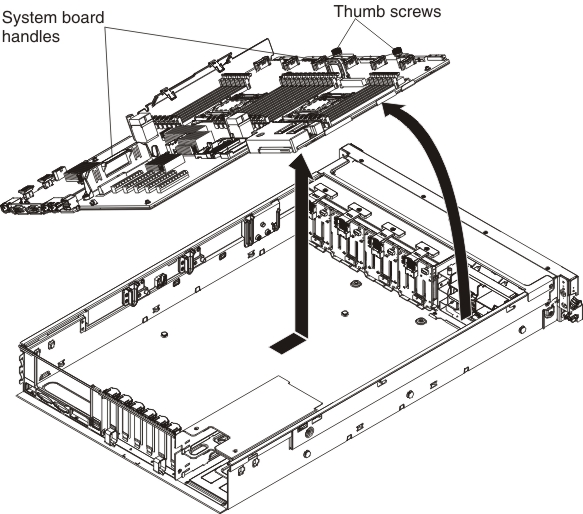Removing the system board
Use this information to remove the system board.
Before you remove the system board from the server, take the following steps to save data, firmware, and configuration data:
- Record all system configuration information, such as integrated management module II (IMM2) IP addresses, vital product data, and the machine type, model number, serial number, Universally Unique Identifier, and asset tag of the server.
- Using the Advanced Settings Utility (ASU), save the system configuration to external media.
- Save the system-event log to external media.
Note
When you replace the system board, you must update the server with the latest firmware or restore the pre-existing firmware that the customer provides on a CD or DVD image. Make sure that you have the latest firmware or a copy of the pre-existing firmware before you proceed.
To remove the system board, complete the following steps:
Give documentation feedback
